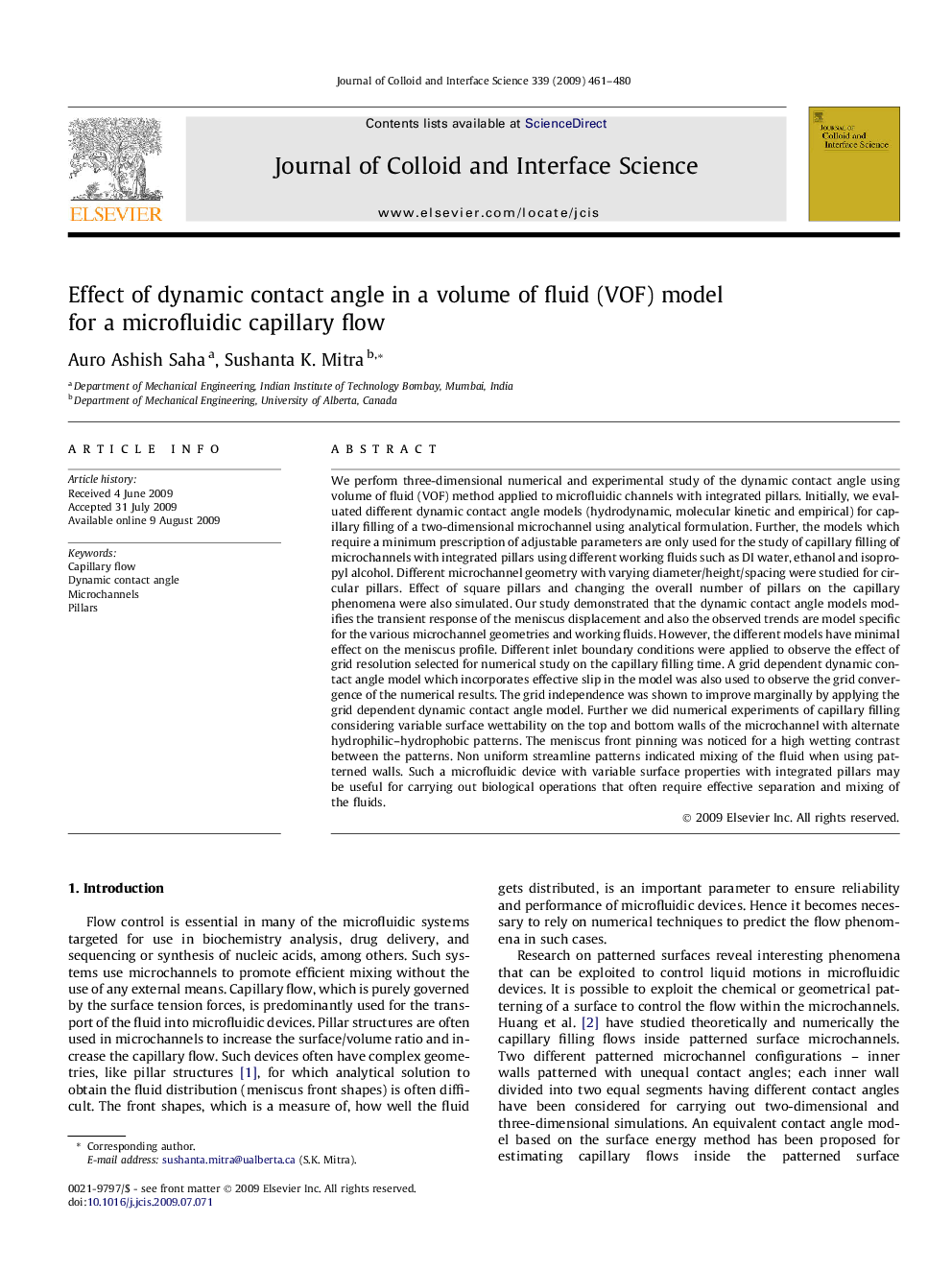| Article ID | Journal | Published Year | Pages | File Type |
|---|---|---|---|---|
| 610289 | Journal of Colloid and Interface Science | 2009 | 20 Pages |
We perform three-dimensional numerical and experimental study of the dynamic contact angle using volume of fluid (VOF) method applied to microfluidic channels with integrated pillars. Initially, we evaluated different dynamic contact angle models (hydrodynamic, molecular kinetic and empirical) for capillary filling of a two-dimensional microchannel using analytical formulation. Further, the models which require a minimum prescription of adjustable parameters are only used for the study of capillary filling of microchannels with integrated pillars using different working fluids such as DI water, ethanol and isopropyl alcohol. Different microchannel geometry with varying diameter/height/spacing were studied for circular pillars. Effect of square pillars and changing the overall number of pillars on the capillary phenomena were also simulated. Our study demonstrated that the dynamic contact angle models modifies the transient response of the meniscus displacement and also the observed trends are model specific for the various microchannel geometries and working fluids. However, the different models have minimal effect on the meniscus profile. Different inlet boundary conditions were applied to observe the effect of grid resolution selected for numerical study on the capillary filling time. A grid dependent dynamic contact angle model which incorporates effective slip in the model was also used to observe the grid convergence of the numerical results. The grid independence was shown to improve marginally by applying the grid dependent dynamic contact angle model. Further we did numerical experiments of capillary filling considering variable surface wettability on the top and bottom walls of the microchannel with alternate hydrophilic–hydrophobic patterns. The meniscus front pinning was noticed for a high wetting contrast between the patterns. Non uniform streamline patterns indicated mixing of the fluid when using patterned walls. Such a microfluidic device with variable surface properties with integrated pillars may be useful for carrying out biological operations that often require effective separation and mixing of the fluids.
Graphical abstractNumerical and experimental study of dynamic contact angles using VOF method applied to microfluidic channels with integrated pillars is presented. Capillary phenomena considering variable surface wettability indicated non-uniform streamline patterns indicating mixing behavior.Figure optionsDownload full-size imageDownload as PowerPoint slide
